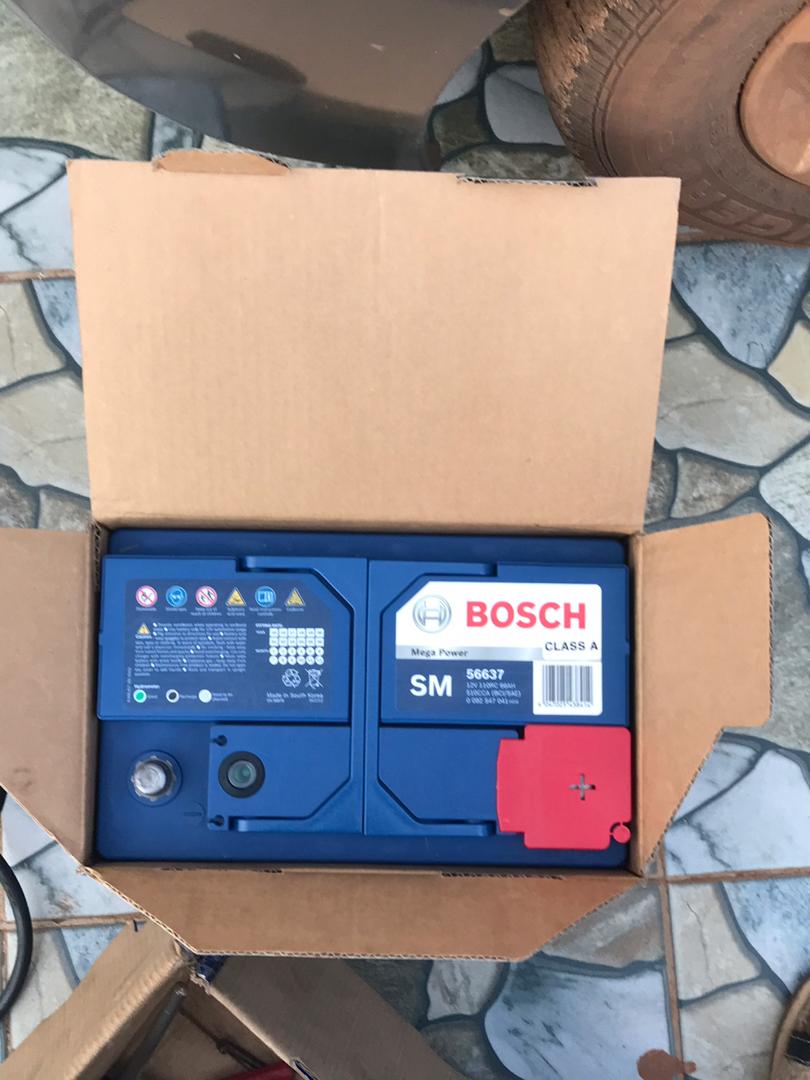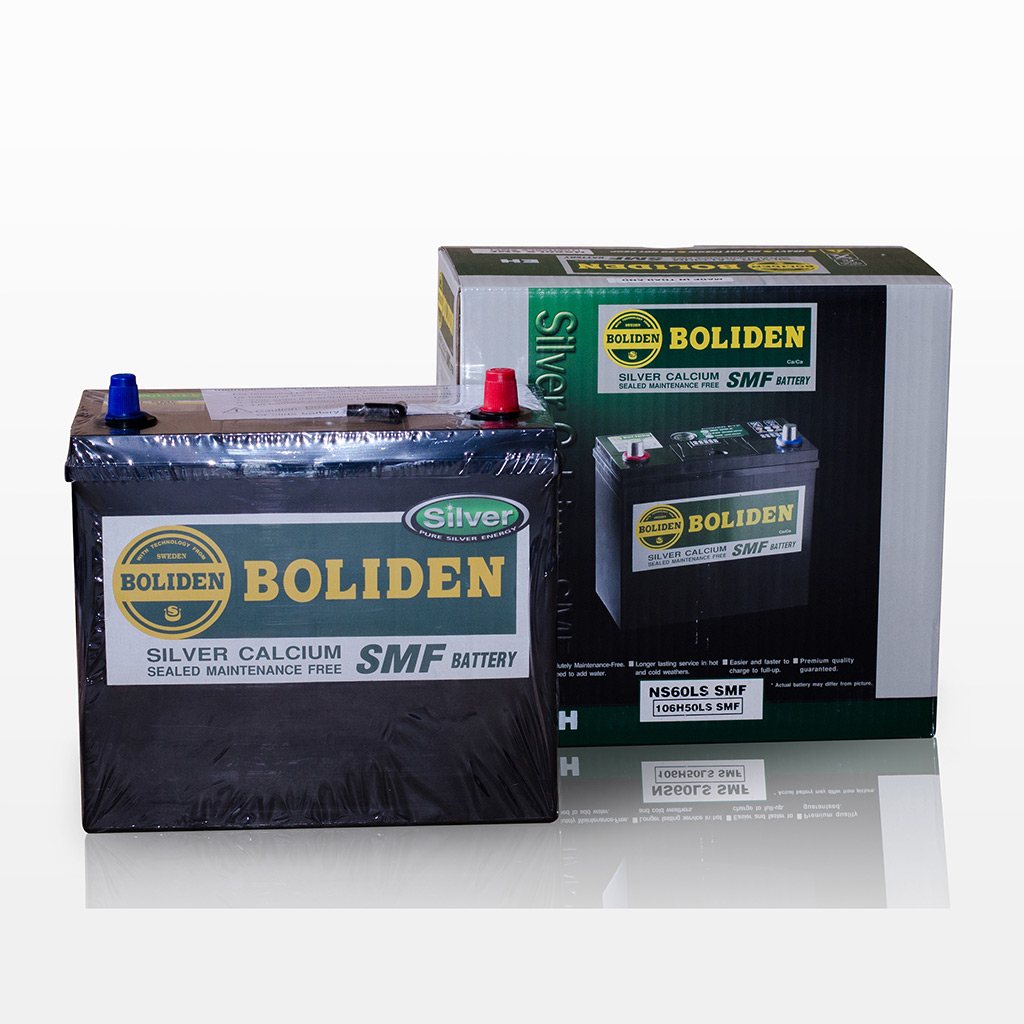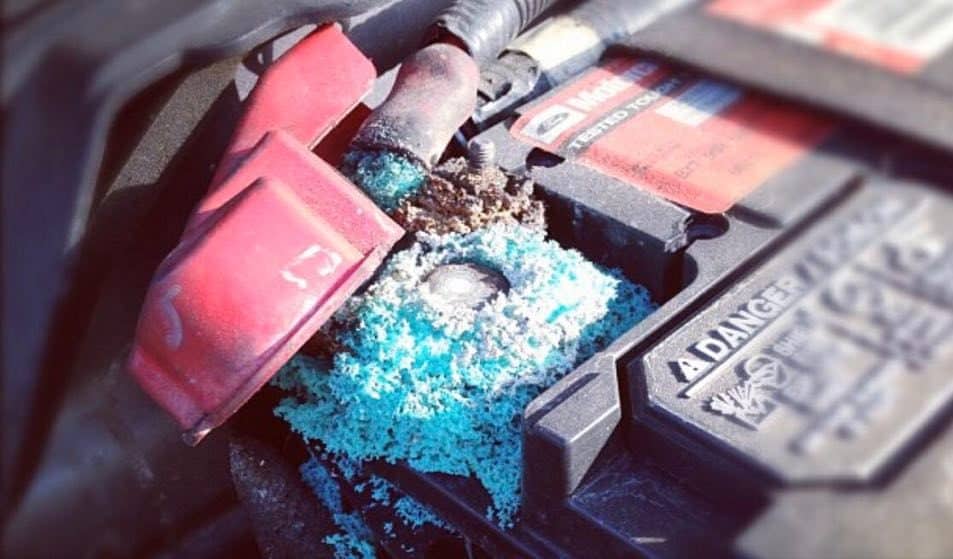The car battery sits under your bonnet and connects to one positive and one negative terminal. They will start a car around 20,000 times before they need replacing. A calcium-powered car battery is more expensive as it starts your vehicle up to 50,000 times before it dies. A high-end, absorbent glass mat battery usually lasts for up to 50,000 starts. If you're having trouble starting your car, buying a new battery from Car Parts 4 Less could solve the problem.
For a list of suitable batteries for your car, type in your registration and press enter. Starter batteries are designed to provide a quick and short burst of energy to start an engine efficiently. Once the engine is running, the alternator begins producing current to serve the vehicle's electrical demand while simultaneously recharging the battery. Traditionally, deep cycle batteries provide greater long-term energy delivery but far less instant on-demand power. This makes them preferable for golf carts, electric trolling motors for boats, off-grid energy storage, RVs and campers. The modest cost of replacing the battery is well worth avoiding the stress caused by a roadside or parking lot breakdown.
Car and truck batteries are either conventional lead-acid or the more advanced AGM design commonly seen in vehicles that are equipped with engine stop-start systems. If you are unsure of the size, amp hour rating or cold cranking amps needed for your vehicle, check the existing battery's label or consult your manufacturer owner's manual. In this article you'll find six of the best car batteries to keep you charging down the road. You never think about how important car batteries are until they let you down. Many people know how frustrating it is to have to try and jump start a car when the battery died.
You're in luck if a battery charger can bring your car battery back to life. Otherwise it may be time to shell out some cash for a car battery replacement. An automotive battery or car battery is a rechargeable battery that is used to start a motor vehicle.
Its main purpose is to provide an electric current to the electric-powered starting motor, which in turn starts the chemically-powered internal combustion engine that actually propels the vehicle. Once the engine is running, power for the car's electrical systems is still supplied by the battery, with the alternator charging the battery as demands increase or decrease. When looking at deep cycle batteries, the amp hour rating will be labeled on the battery or sales packaging or paperwork.
If you are unable to find a vehicle battery's Ah rating, you may be looking at a starting battery, which does not provide continuous power in amp-hours. Knowing how many amp hours your vehicle requires for optimum performance is key. Since higher amp hours mean higher capacity, heavier-duty vehicles should utilize batteries with higher amp-hour ratings. If you are unsure of what amp hour rating is required for your use, consult your vehicle's owner's manual.
Don't forget to include any vehicle modifications or add-ons that would increase power draw, like winches or upgraded audio systems. To do this, calculate the run time of your accessories by dividing the battery's Amp hour rating by the amp draw each accessory. You may need to divide the accessory's wattage by the voltage to get its amp hour rating. For 20 years, AAA has been dispatching mobile units to test and install new car and truck batteries for stranded members. For maximum convenience, AAA car battery replacement service sends to your location a trained auto technician who performs a free diagnostic test of your car's battery, and starting and charging systems. If necessary, and with your approval, the technician can install a new high-quality AAA branded battery right on the spot.
Antigravity Batteries' heavy-duty ATX30 Lithium Ion Battery boasts an unusual combination of traits, it's the most powerful lightweight and compact battery on the market. Rated for an electrifying 970 cranking amps and 48-amp hours, it weighs just 7.81 pounds. It offers twice the capacity of competitor lithium batteries of the same size and twice the life cycle of lead acid batteries. Folks who own specialized vehicles such as heavily accessorized touring motorcycles, racing and street performance vehicles, and even experimental aircraft, are well-served by the Antigravity battery. In the past, auto batteries required regular inspection and maintenance to replace water that was decomposed during the operation of the battery. "Low-maintenance" (sometimes called "zero-maintenance") batteries use a different alloy for the plate elements, reducing the amount of water decomposed on charging.
A modern battery may not require additional water over its useful life; some types eliminate the individual filler caps for each cell. A weakness of these batteries is that they are very intolerant of deep discharge, such as when the car battery is completely drained by leaving the lights on. This coats the lead plate electrodes with lead sulphate deposits and can reduce the battery's lifespan by a third or more. A flooded lead acid battery that can be fitted to most vehicles. These batteries contain lead plates that react with the battery acid to store electricity when charged. Inside these batteries there is an electrolyte that can leak out of the top of the battery through the caps if not stored upright.
Your car battery supplies the current to the starter motor and ignition system when you start the engine. In modern vehicles especially, it's more important than ever to choose the right one, and ensure it's fitted correctly. Find yours within our current range of car batteries, and take advantage of our battery fitting with our Fit It For Me service.
A C rating is a measurement of the rate of time that it takes to completely charge or discharge a battery. Temperatures also impact how quickly a battery can charge or discharge. A battery with a higher C rating will deliver more energy for higher performance. EV batteries undergo cycles of 'discharge' that occur when driving and 'charge' when the car's plugged in.
Repeating this process over time affects the amount of charge the battery can hold. This decreases the range and time needed between each journey to charge. Most manufacturers have a five to eight-year warranty on their battery. However, the current prediction is that an electric car battery will last from 10 – 20 years before they need to be replaced. Frequent, short car trips contribute to an earlier lifespan for car batteries. It takes roughly eight hours of continuous driving for the alternator to fully charge the battery.
If the battery infrequently receives a full charge, strong crystalline deposits can form on the negative plates and consequently prevents the battery from charging properly – this is called sulphation. If short car trips are a part of your daily routine, avoid using electric auxiliary controls unnecessarily – this will prolong the lifespan of the battery and also save on fuel. It withstands heavy use and is vibration resistant even in harsh conditions, and it can tolerate being stored for lengthy periods of time. Optima's SpiralCell technology achieves clean, strong power and consists of individual spiral-wound cells comprised of two positive and negative 99.99% lead plates that are precisely coated in lead oxide.
It may be desirable to supply power to the Auxiliary Battery or Refrigerator Outputs at times when the engine is not running. This would be desirable when the car is stopped for a short while (at a service station, etc.) to maintain the supply to the refrigerator. Alternatively, the outputs may be used to supply other 12 V accessories (+12 V hand-held spotlight, etc.). Such use is facilitated by Override Inputs A and B, TB1-1 and TB1-3 respectively.
Override Input A, when taken to +12 V, switches on RL1 via D4 and supplies power to the Auxiliary Battery Output. Similarly, Override Input B, when taken to +12 V switches on RL2 via D11 and supplies power to the Refrigerator Output. Care should be taken that the car's battery is not drained to such a level that there is insufficient charge to restart the engine.
The time for this to happen is a function of the current drawn and the capacity of the battery. Ambient temperature has a significant impact on battery life and performance. Most car batteries use a liquid electrolyte solution to hold a charge, which is affected by hot or cold weather. While it takes extremely low temperatures to freeze a battery, cold reduces the solution's ability to transfer full power . There's a misconception that buying a battery with a higher CCA rating will remedy this, but since vehicle computers regulate the amperage required for startup, it actually won't make any difference.
Use a battery heater instead – it's like a toasty jacket that will keep your battery warm and reliable all winter. Over the life of a battery, discharge-recharge reactions happen thousands of times. Each cycle wears out the plates a bit, and over time the lead deteriorates.
As your car battery loses capacity, cold cranking amps decrease. A vehicle battery's cold cranking amp rating is an industry standard that defines how well a battery can start a vehicle in cold temperatures. The battery's CCA rating measures how much electrical power a battery can provide at zero degrees Fahrenheit for 30 seconds while maintaining 7.2 volts of power.
A battery should have least one cold-cranking amp for every cubic inch of engine displacement or two cold-cranking amps per cubic inch of displacement for diesels. Never install a battery with a lesser CCA rating than what the vehicle manufacturer recommends because it could cause issues with the vehicle's electrical system. However, installing a battery with a higher CCA rating will work, but may cause the battery to have a shorter life in hot climates. Note that CCA is not to be confused with cranking amps ratings, which are based on a less complex test that produces inflated or inaccurate numbers. As well as starting the engine, an SLI battery supplies the extra power necessary when the vehicle's electrical requirements exceed the supply from the charging system.
It is also a stabilizer, evening out potentially damaging voltage spikes. A car batteries main purpose is to provide an electric current. The current fuels the starting motor which starts the engine and moves the car. The battery also provides power to the vehicles electrical system which controls your dashboard, as well as plugged in electrical devices. Batteries failing are a common reason for breakdown call outs. A car battery is a rechargeable automotive battery that is needed to start a motor vehicle and power the electrical components at the press of a button or the turn of a key.
A car's battery uses an alternator to recharge; the alternator is a motor that works when the engine is running, recharging the car's battery as it goes. It works similarly to a generator, using fuel to generate energy, and making sure that the car battery has enough power to run all the electrical components in your car. A lead acid car battery stores energy created by your car's alternator. The battery can then supply this power as and when it's required. When it comes to picking the right battery charger, the kind of vehicle you drive typically doesn't play a major role. After all, most cars, motorcycles, SUVs, trucks and other road vehicles use lead-acid batteries, which are relatively resilient and inexpensive to manufacture.
A charger that can power up a lead acid battery in an SUV can do the same for one in a motorcycle, for instance. The two types of auto batteries — flooded and AGM batteries — use lead-acid technology. A typical lead-acid car battery contains plates of lead alternating with plates made up of other materials, all immersed in an electrolyte solution of about one-third sulfuric acid and two-thirds water. Car batteries supply energy to the car; powering the starter motor, lights, ignition system, interior devices and more. Modern cars rely upon an array of complex electrical devices and all of them are powered by the car battery.
With so many crucial components of the car relying on battery power, it is important to ensure that your car benefits from the right battery for the job. Wouldn't it be easier to tell when you needed a battery replacement if your car gave you a sign? Your dashboard battery light is designed to illuminate when your vehicle senses a battery or starting issue. When all else fails, you can also rely on the age of your battery to provide an estimate of when it may need to be replaced. The average car battery will last three years, though this could be affected by your battery brand, vehicle type, area's climate, car care, and driving patterns. There is, however, an emerging class of batteries that perform both as a starting battery and a deep cycle battery.
A few manufacturers make models aimed at the marine market that feature two sets of terminals, one for the starting circuit and one for the trolling motor. That technology has moved into the automotive realm, many makers producing batteries with huge reserves of power and impressive cranking grunt on demand for starting a vehicle. Generally more expensive, buyers may have to do a bit of research to make sure this type of battery is compatible with their vehicle and find the model that fits.
The Megavolt lead acid car battery features a high discharge rate, a wide range of high and low operating temperatures and deep discharge recovery. It's the most popular battery choice for the car owner who's on a budget and is one of the lowest-priced, but still reliable, batteries on the market. The rechargeable battery weighs 29 pounds, lighter than many competing lead-acid batteries, and can be mounted in any position.
For a lead-acid design, it resists shocks and vibration fairly well, and offers long-lasting performance. You can find our entire range of car batteries and car battery charging accessories online. Spend over £40 and we'll deliver everything for free, with free returns if you're unhappy.
Or, use our Click and Collect service to have your new car battery or charging accessories delivered to your local Halfords store of choice. While you're there, you'll find everything you need for a life on the road. The first starting and charging systems were designed to be 6-volt and positive-ground systems, with the vehicle's chassis directly connected to the positive battery terminal. Today, almost all road vehicles have a negative ground system. The negative battery terminal is connected to the car's chassis.
Typically, starting uses less than three percent of the battery capacity. For this reason, automotive batteries are designed to deliver maximum current for a short period of time. They are sometimes referred to as "SLI batteries" for this reason, for starting, lighting and ignition.
SLI batteries are not designed for deep discharging, and a full discharge can reduce the battery's lifespan. When a battery is completely flat the engine wont turnover and the battery may need charging. Car battery chargers attach to the terminals of a car battery and charge it through the electrical mains. Terminals must be connected to the appropriate electrical lead, if you not sure, check your car's handbook or get it checked by a professional in one of our branches.
Look no further; our car battery range covers all of the popular vehicle fitments and are suitable for all types of vehicles. Our extensive range includes cheap car batteries with a high specification through to premium batteries. These best value car batteries are manufactured by Napa; innovators in technology, producing quality batteries for OE fitment.




























No comments:
Post a Comment
Note: Only a member of this blog may post a comment.